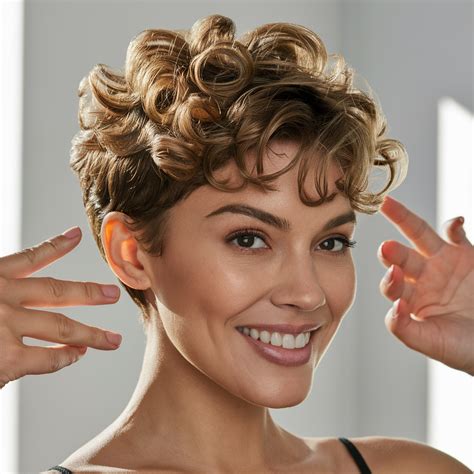Introduction
Hair color is a powerful tool for self-expression, allowing individuals to enhance their natural features and create a look that reflects their personality. With the advancements in hair coloring techniques and products, there are now countless possibilities for transforming one’s hair. Hair color 2 is a versatile option that offers a range of shades to complement various skin tones and desired results.

Choosing the Right Shade for Your Skin Tone
Selecting the ideal hair color 2 requires careful consideration of one’s skin tone. Here are some general guidelines:
- Cool skin tones: Opt for hair colors with blue or purple undertones, such as ash blonde, burgundy, or deep brown.
- Warm skin tones: Choose hair colors with golden or peachy undertones, such as honey blonde, copper, or caramel brown.
- Neutral skin tones: Consider both cool and warm shades, as either can complement this versatile skin tone.
Types of Hair Color 2
Hair color 2 encompasses a wide range of shades, each with its own unique characteristics:
- Natural: These shades closely resemble natural hair colors, such as black, brown, and blonde.
- Fashion: These shades are vibrant and unconventional, such as blue, green, or pink.
- Demi-permanent: These shades gradually fade over time, typically lasting up to 24 washes.
- Permanent: These shades remain in the hair until they are removed or grow out.
The Science Behind Hair Color
Understanding the chemistry of hair color is crucial for achieving the desired results. Hair color pigments, called melanin, are located in the hair shaft. Melanin comes in two forms: eumelanin (dark pigments) and pheomelanin (red pigments). The balance of these pigments determines the natural hair color.
Professional vs. At-Home Hair Coloring
Both professional and at-home hair coloring options are available. Professional colorists have the expertise to assess hair health, determine the best shade, and apply color precisely. At-home hair coloring offers convenience and affordability but requires thorough preparation and careful application.
Professional Hair Coloring
- Consult with a hair colorist for personalized advice.
- Expect a higher cost than at-home coloring.
- Ensures precise application and optimal results.
At-Home Hair Coloring
- Read and follow instructions carefully.
- Perform a patch test to check for allergies.
- Set aside ample time for the process.
Step-by-Step Guide to At-Home Hair Coloring
- Gather materials: Color kit, brush, gloves, bowl, etc.
- Prepare hair: Wash and towel dry hair.
- Mix color: Combine developer and color according to instructions.
- Apply color: Divide hair into sections and apply color evenly from roots to tips.
- Process: Leave color in for the recommended time.
- Rinse and condition: Rinse hair thoroughly and apply conditioner.
- Style: Style hair as desired.
Common Mistakes to Avoid
- Overprocessing: Leaving color in for longer than recommended can damage hair.
- Uneven application: Applying color unevenly can lead to patchy results.
- Using too much bleach: Bleach can weaken hair and cause breakage.
- Not using conditioner: Conditioning after coloring helps to restore moisture and prevent dryness.
- Frequent heat styling: Excessive heat can fade color and damage hair.
Hair Care After Coloring
Proper hair care is essential to maintain the health and vibrancy of colored hair. Follow these tips:
- Use color-safe shampoo and conditioner.
- Minimize heat styling.
- Apply hair masks regularly.
- Trim split ends regularly.
- Touch up roots as needed.
Innovative Hair Color 2 Applications
In addition to traditional hair coloring, innovative techniques are emerging that offer unique and captivating effects:
- Balayage: A freehand painting technique that creates natural-looking highlights.
- Ombré: A gradual transition from one color to another.
- Sombre: A softer version of ombré, with a more subtle transition.
- Color melting: A technique that effortlessly blends multiple shades for a seamless finish.
Conclusion
Hair color 2 is a versatile and powerful tool for personalizing one’s appearance. By choosing the right shade, understanding the science behind hair color, and following proper application and care techniques, individuals can achieve the desired look while maintaining healthy hair. With the advancements in hair coloring technology, the possibilities for expressing oneself through hair color are endless.
Tables
Table 1: Hair Color 2 Shades for Different Skin Tones
| Skin Tone | Ideal Shades |
|---|---|
| Cool | Ash blonde, Burgundy, Deep brown |
| Warm | Honey blonde, Copper, Caramel brown |
| Neutral | Both cool and warm shades |
Table 2: Types of Hair Color 2
| Type | Description |
|---|---|
| Natural | Resembles natural hair colors |
| Fashion | Vibrant and unconventional |
| Demi-permanent | Fades gradually over time |
| Permanent | Remains in hair until removed or grows out |
Table 3: Common Mistakes to Avoid When Coloring Hair
| Mistake | Consequence |
|---|---|
| Overprocessing | Damaged hair |
| Uneven application | Patchy results |
| Using too much bleach | Weak, breakage-prone hair |
| Not using conditioner | Dryness |
| Frequent heat styling | Faded color, damaged hair |
Table 4: Innovative Hair Color 2 Applications
| Technique | Description |
|---|---|
| Balayage | Freehand painting for natural-looking highlights |
| Ombré | Gradual transition from one color to another |
| Sombre | Softer version of ombré |
| Color melting | Effortless blend of multiple shades for a seamless finish |
